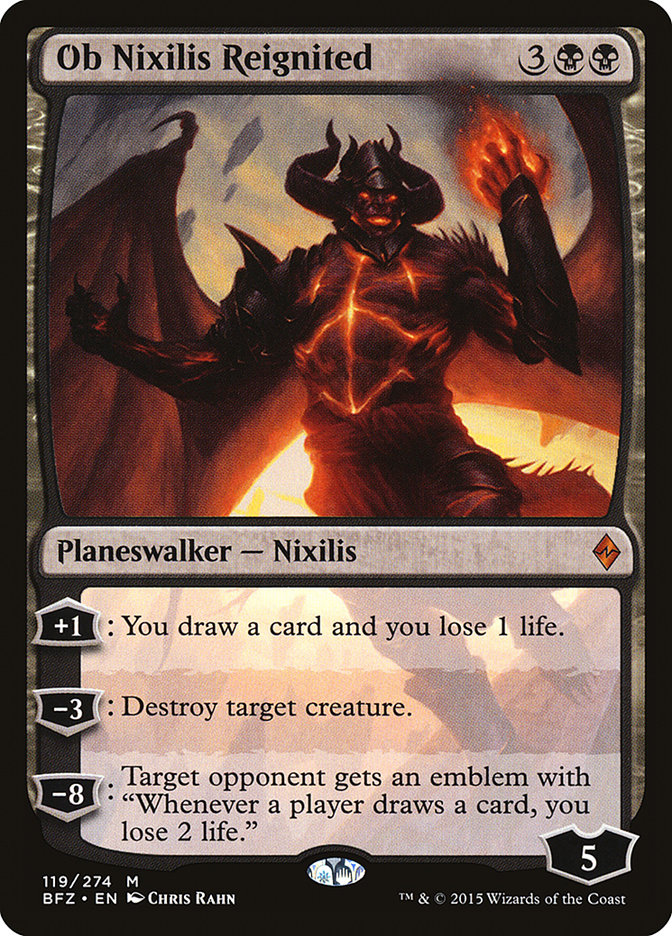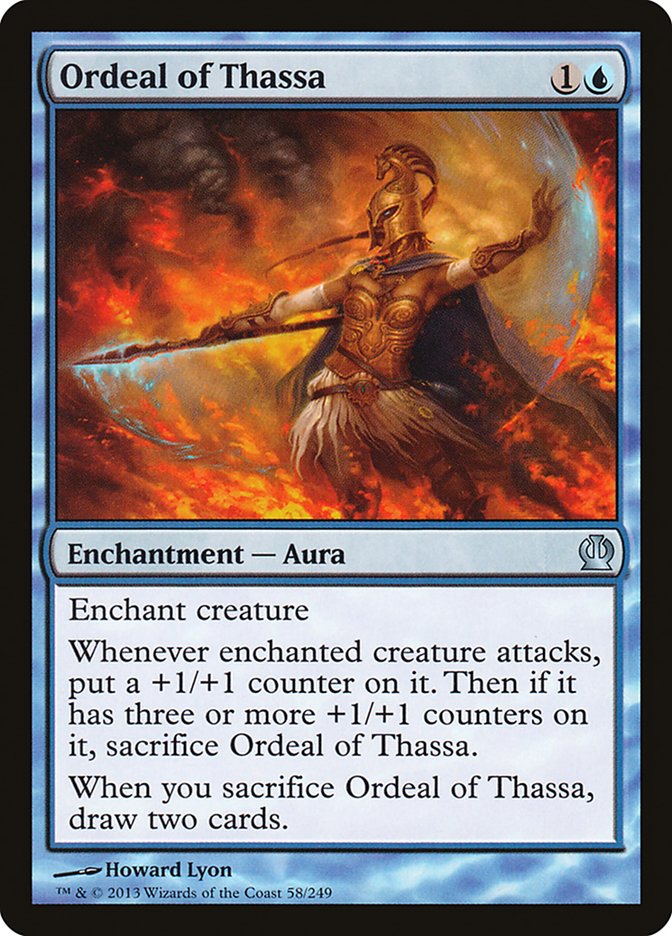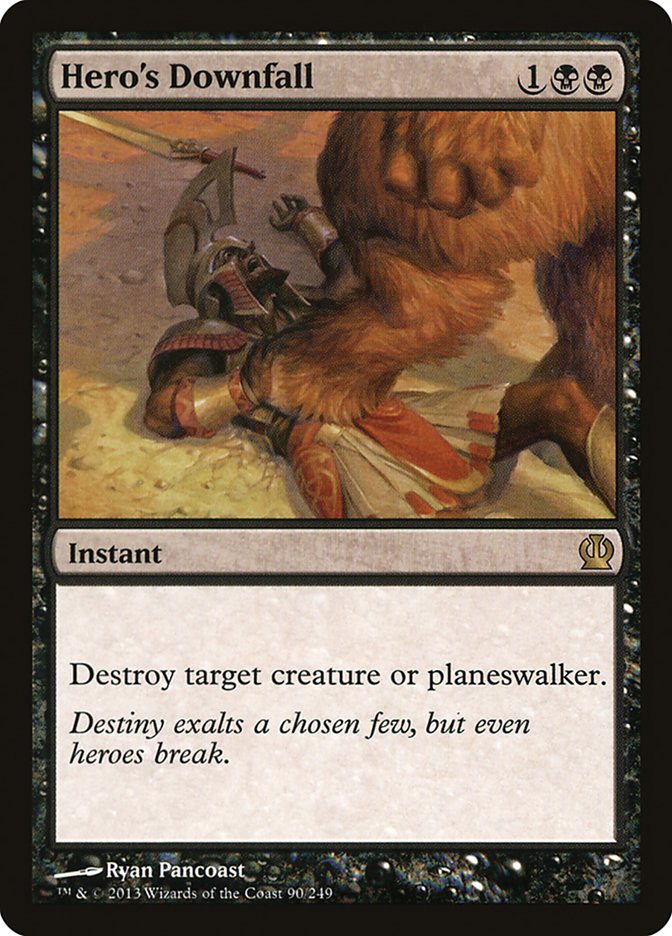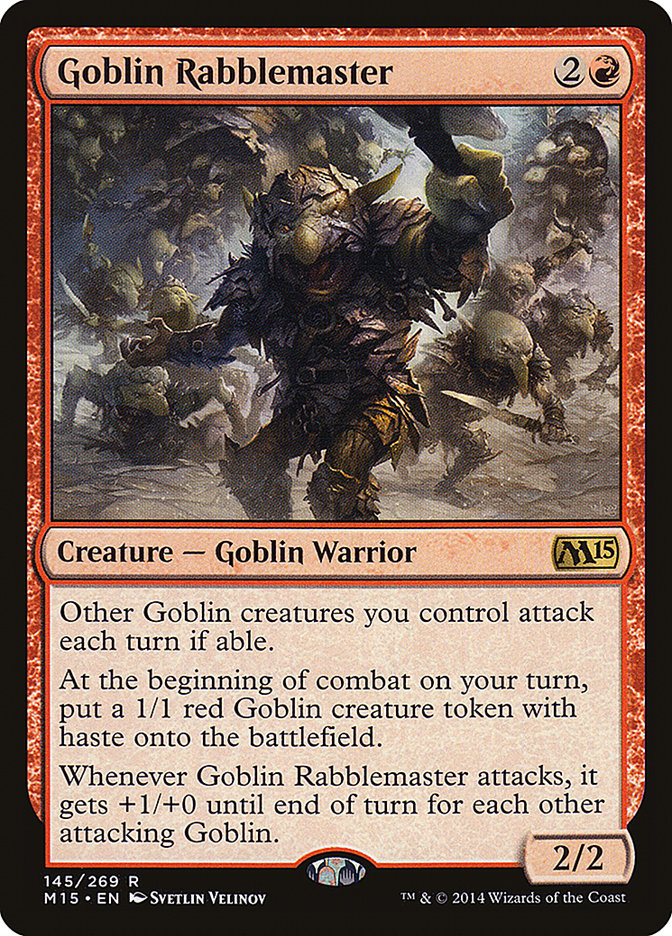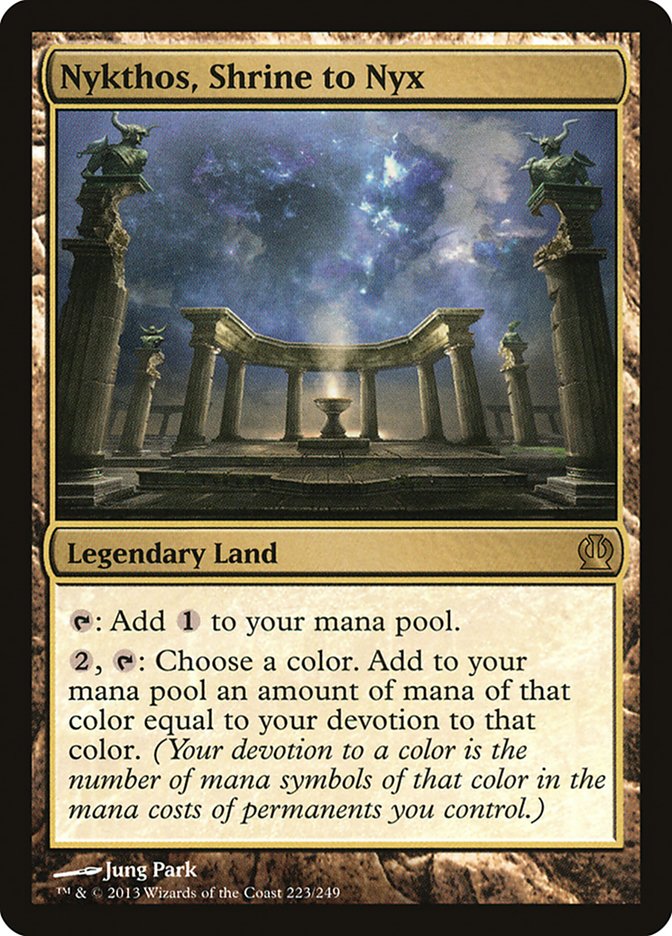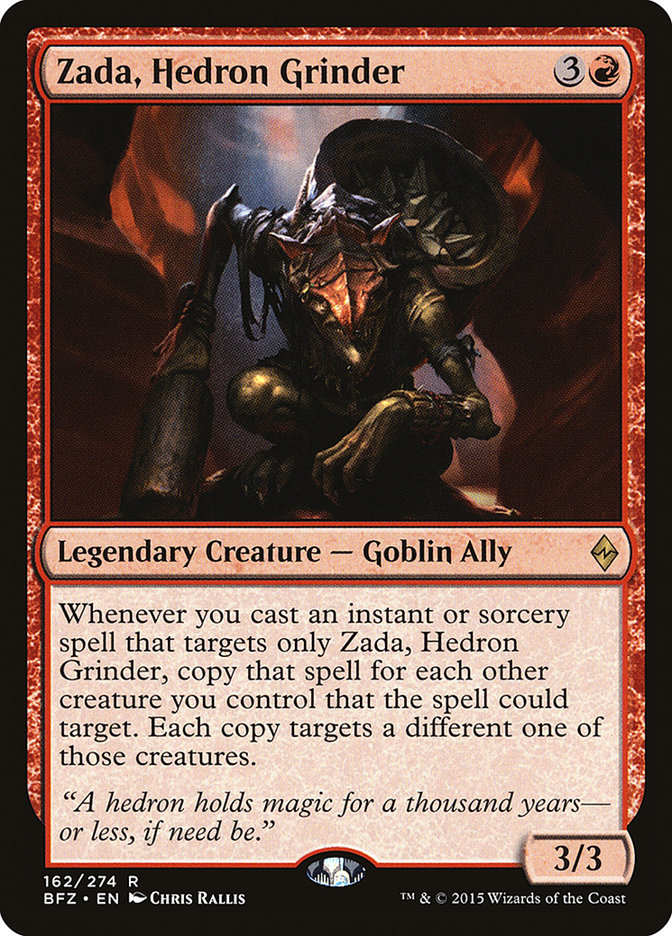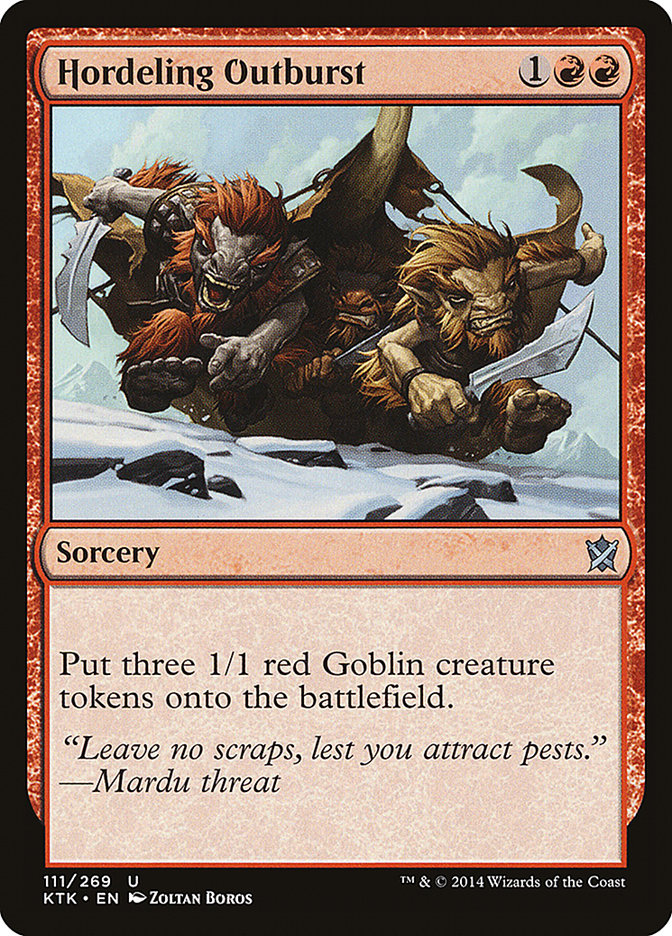The world is shifting!
We’re returning to my favorite plane in the Multiverse, Zendikar, which bears one of my favorite creature types: Eldrazi. Big, Cthulhu-like bruisers that
defy logic, these behemoths will make their presence known wherever they go. Poor defenseless Zendikar is under their thumb again, and the idea of the
world banding together pushes all my flavor buttons!
As cool as the set looks aesthetically and mechanically, what will it actually do for the format?
Before answering the question of what’s new, we have to remember what’s old. We’re losing amazing Standard cards that we’ve had in the back of our mind for
the last year.
Every color had something to offer in terms of “cards to beat.” With Battle to Zendikar, though, I feel like things are slowing down, and the
order in which you play your cards and the manner in which you use your cards will have a larger impact. With the implementation of the mulligan
scry rule and the generally higher casting cost of the newest spells, it appears that Wizards is making the game a little less reliant on luck and more
skill-dependent. While normally this means things like library manipulation, hyper-efficient removal, and strong countermagic, they’ve made it about
scaling this time.
Ari Lax had a great article last week about scaling,
and I totally agree; every card can be good in the right situation, but determining the right situation and how to best and most effectively utilize your
resources will become part of the game. Spells scale with the course of the game. Awaken is one of my favorite new mechanics in a while, and I love how it
makes conditional earlygame spells winners in the lategame. Giving yourself that level of options over so many of your spells is exciting when you consider
actually playing games. Multikicker, which first appeared in Worldwake, was perhaps one of the most linear scaling mechanics in the game.
Awaken follows in that vein while keeping with Zendikar’s theme.
So scaling is great and all, but we have the whole spoiler, Matt. Time to get to brewing, right?
Poring over the spoiler during mid-September has become a favorite pastime, but as I noted, grouped, and reread cards from the spoiler this week, nothing
in particular jumped out at me as the first thing I have to brew with. There were lots of nifty cards and cute interactions, but a lot of them
seemed metagame dependent. Red aggro may have slipped down a tier without Stoke the Flames and Lightning Strike, but certainly other aggro decks would
arise. Control decks could learn to live without Last Breath, Temples, and Elspeth, Sun’s Champion. Midrange decks can survive without Sylvan Caryatid.
There doesn’t seem to be a clear angle, so I’ll just start with the wackiest one.
More than about any other creature in the set, Zada screams (or shrieks, her being a Goblin and all) to be built around. As a last vestige of something
like heroic, Zada’s ability lets you target her with an instant or sorcery and copy it for the rest of your team. Thus, pump spells provide the greatest
payoff for targeting Zada.
Once you’ve selected Zada, you need to have the creatures alongside her to receive those copies. From there, we look to two of the format’s extant token
producers for help.
Efficient, on-color, and even on creature type, these Goblin producers are as efficient as you get.
Green is known for its single target pumps; why not just go way over the top?
When you say the words “exponential” to me when discussing Magic, I lean in closer. With just Zada, it’s a lousy +1/+1. With just one other creature,
you’ll get a combined +4/+4 (+2/+2 for each creature). Beyond that you’re looking at nine, sixteen, twenty-five power…every token makes it that much
better. No longer will those 1/1 Goblin tokens be forced to chump block lategame. They can have teeth, too.
Here’s where we land.
Creatures (16)
- 4 Rattleclaw Mystic
- 4 Monastery Swiftspear
- 3 Abbot of Keral Keep
- 4 Zada, Hedron Grinder
- 1 Catacomb Sifter
Lands (23)
Spells (21)

You’re looking at a funny list. I’ve been fiddling with the lands for a few weeks now in practice, and while the Battle lands like Smoldering Marsh aren’t
Blood Crypt, they’re pretty good for Standard. We can now bridge the third color pretty easily, e.g. using a Bloodstained Mire to find green via Cinder
Glade. Because of this newfound ease, you can be on the splash for lots of crazy colors without fiddling with your consistency all that much. While I can
produce every color in theory, I’ve left blue out. Converge is tempting, but I have to draw the line somewhere.
Creatures
Zada, Hedron Grinder is a lightning rod. I wish Lightning Bolt was Standard-legal just so that metaphor would ring truer. But really, Zada will be the top
priority to kill the moment you resolve her, so you’ll do well to play the set. It also has Hill Giant sizing, which is pretty big for a Goblin, so you may
end up blocking with one. Regardless, it’s the core so we need the set of them.
From there, the remaining creature list works with Zada, albeit subtly. Monastery Swiftspear loves decks where you can cast noncreature spells for cheap,
and this deck is full of them. Moreover, if you untap with Zada and are ready to make your alpha strike, having a handful of haste creatures waiting in the
wings lets you untap for the blowout. If you untap with a lone Zada and four lands, you can jam the three Swiftspears you’ve been sandbagging, cast a Might
of the Masses targeting Zada and hit them for twenty-two damage after their prowess triggers. Surprise!
Rattleclaw Mystic lets me land Zada a turn early, untapping on turn 4 for a potentially devastating strike. While you might think a four-color deck might
miss Sylvan Caryatid, every creature I make needs to be able to attack. Rattleclaw Mystic, while not being nearly as colorful as the rotating Plant, still
has points of power and can kill something in combat.
Abbot of Keral Keep has already proven itself in Standard, and here, we want more prowess creatures and draw, and the Abbot provides both. The Abbot packs
a huge punch with just a spell or two in combat, and even without Zada, it’ll get a boost from every instant you cast. In reality, we’re trying to fill the
gaps that not drawing Zada would leave.
Finally, I want to try to Catacomb Sifter. Between the stats provided and the on-death scry trigger, the Sifter feels a lot like Reaper of the Wilds, a
card that, despite its power level, saw relatively little play. The Sifter provides two creatures as well, helping to add more targets for Zada’s trigger
and to buff the Might of the Masses. On a sidenote, if it had been a 3/4, I think the Reaper would have seen more action.
Spells
In the spell category, we’ve got a lot of fun numbers. First, we have eight Goblin producers. Bile Blight’s not a concern anymore, so anything that
destroys the tokens would destroy the rest of your board, e.g. Languish or Radiant Flames.
I predict that Murderous Cut will gain a lot of ground in the new format as an increasingly efficient, broad removal spell. With all our fetchlands and
inexpensive spells, casting it for B should be pretty easy. We won’t need to kill everything they’ve got, just those critical things that get in your way
of winning.
Once you’ve had enough and you’re ready to find your Zada and end the game, Gather the Pack is there for you. Gather the Pack might be the new Commune of
the Gods thanks to the latter’s rotation, and it also helps the aforementioned Murderous Cut, and we have a nice balance of creatures and spells for the
spell mastery to not only be online but be relevant, too.
Might of the Masses and the single Become Immense serve similar purposes. Might of the Masses can be stacked during one turn, while a Become Immense is a
little more swingy. You’ll never need more than one Become Immense, but you’ll probably occasionally need an extra Might of the Masses on the side to turn
a random combat step into a more favorable exchange.
The other singletons provide a bit more power. Painful Truths, a spell I imagine will be really good over the course of the next few months, gives so much
draw for so little mana. Life loss? Who cares when you’re drawing three! Another converge spell, Unified Front, provides up to four tokens for
Zada, making any Might of the Masses instantly lethal. Atarka’s Command works well with tokens for its +1/+1 buff to the team, and Crater’s Claws, one of
the best scaling spells from Tarkir, slides in here just in case you can’t get through and you need to finish them off without combat. I’m no fool; this
deck’s a longshot, so sometimes you need a conventional way to get the win.
Land
Landbases look kind of funny post-rotation. Battle lands in the place of Temples means your draw step is less consistent while your mana is more
consistent, both with fixing and having the potential to enter the battlefield untapped. I’m sure that most manabases at this point remain relatively
untested, but I’ll never need more than one white source and only occasionally need two black sources. The rest of the time I’m red and green, so that’s
where we’ve focused. Having extra lands won’t be such a big deal anymore thanks to the scalability of a lot of spells, so 23 lands might be the new bottom.
A potential sideboard might include ringers like Den Protector, enchantment or artifact removal, or low-cost removal like Magma Spray or Fiery Impulse.
In simple testing against itself, some cards shined more than others. Abbot of Keral Keep was often best when it hit a land drop for me on turn 3, and
Monastery Swiftspears were considerably worse after turn 1. Might of the Masses was pretty good, often being a Giant Growth or better. There should
probably more early turn interaction. One card that was great was Catacomb Sifter. A “3/4” for three mana is pretty good right now, and having a
built in scry 1 (if you sacrifice the Eldrazi Scion) is excellent. It had a lot of presence for an uncommon, and I’d happily play more in a future build.
The list is a fun way to break into the format, but I’ll be getting more serious for the SCG Open Series in Indianapolis a week from Saturday. My squad and
I will be tootling up the road to Indy to try out the format firsthand. I’m furiously brewing to try and find the deck that will break into the new
Standard with guns blazing. I’m a long way off, but the journey is half the fun!
We’ve still got a Prerelease to look forward to, though, and instead of getting colored, seeded packs like before, we’re all getting a cool rare and six
packs. The whole “colorless” feel of that setup isn’t lost on me, and I’m thrilled to not have to make a decision that I’ll constantly blame my poor play
on. There’s lots of strong Limited cards in the set that, I think, might have a better chance than ever to see a sixty-card deck.
What about the Zada do you like or dislike? Is there another angle to Zada that wasn’t explored here? Maybe blue, the only color not used, is the best
choice for you?


